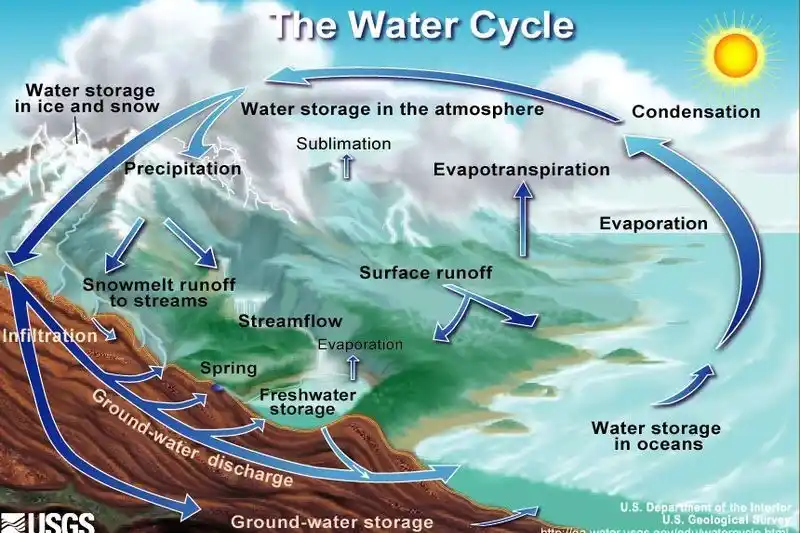At AquaSwitch, we help businesses get more from their water supply and help them become more sustainable. Water is a scarce resource in the UK. In this blog, let’s look at where the water that we all use comes from.
What is the water cycle?

The water cycle is a process whereby water is transferred between the ocean, the atmosphere and the land. The water cycle is important as it purifies ocean water to replenish rivers and lakes. The British water network relies on reservoirs being naturally filled by the water cycle to provide the water used by homes and businesses.
How does the water cycle work?
The water cycle comprises the following processes that transform and move water from one place to another:
Evaporation
The sun shines on the ocean transferring solar energy to the surface water. Solar energy causes evaporation where water molecules in the sea turn from a liquid in the sea into a gas in the air.
Condensation
The evaporated water rises through the atmosphere, gradually cooling. Once the water has sufficiently cooled, the individual molecules condense to form water droplets. A vast number of individual water droplets form clouds.
Precipitation
The water droplets in clouds gradually merge, forming larger and larger droplets. Larger droplets are heavier and, at a certain point, will fall from the cloud in the form of rain or snow.
Runoff
Rain falling on the land will flow, either above ground or below ground, into streams and rivers. The streams and rivers fill the artificial reservoirs used to supply the mains network. Eventually, the water from streams, rivers and reservoirs will flow back into the sea, completing the water cycle.
The impact on the water cycle from climate change
Climate change is increasing the instances of extreme weather, contributing to increased droughts and floods worldwide. This may seem contradictory, but climate change has two separate impacts on the water cycle.
Firstly, the evaporation of water is heavily dependent upon temperatures. As global temperatures increase, the amount of water evaporated into the atmosphere also increases, leading to more clouds and more extreme weather.
Secondly, increased temperatures are increasing the evaporation of water on land. Water stored in the soil will evaporate back into the atmosphere at higher temperatures instead of flowing into streams and rivers. Less water in rivers means less water available to fill the man-made reservoirs the water network uses.
How can my business be more sustainable?
Business water suppliers are working on two initiatives that help companies reduce their environmental impact, these are:
- Helping businesses reduce wasted water consumption by installing simple water saving devices.
- Offering green water tariffs that offset the carbon footprint associated with mains water supply.
Find a water supplier that offers a green tariff with the AquaSwitch business water comparison service today.
The electricity and gas supplies used by businesses are generally not sustainable, relying heavily on fossil fuels. Companies can be more sustainable by moving to a green tariff that relies on renewable sources of energy.
Find the green energy tariffs available to your business with our business energy comparison service.

